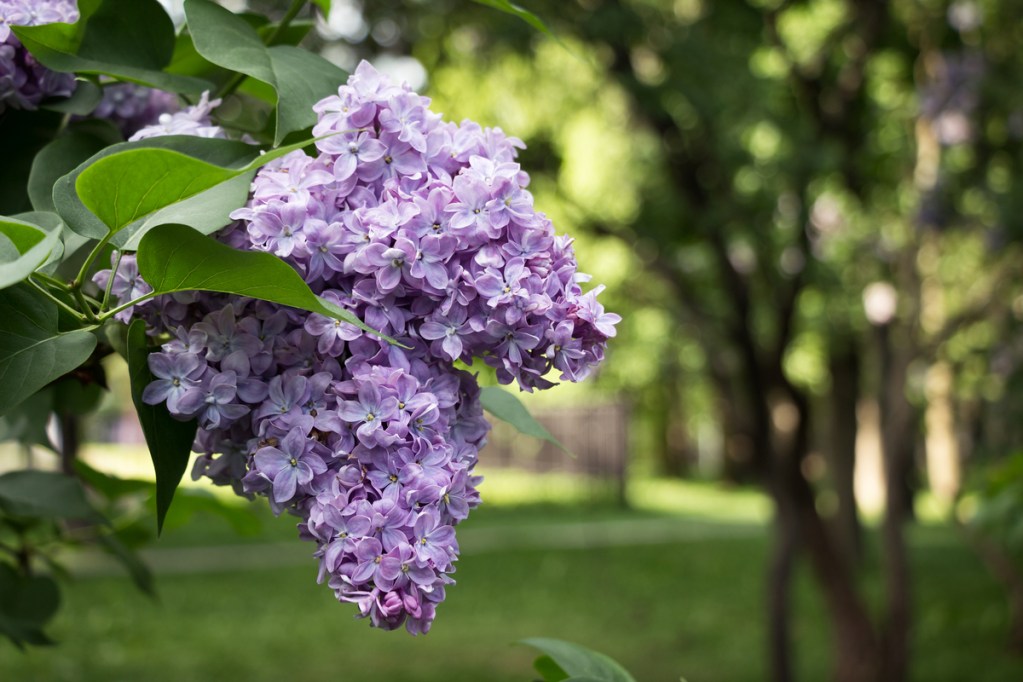
Known for their beautiful, fragrant blooms and abundant growth, lilacs are a popular landscaping choice among gardeners. On top of this, they’re also pretty easy to care for as long as you give them full sun and well-draining soil. However, they also need regular pruning.
If you’ve pruned trees or shrubs before, then you’ll be happy to know that pruning lilacs is fairly similar. For those who don’t have much pruning experience, don’t panic! This guide on how to prune lilacs will give you all the information you need to know.

Do lilac bushes like to be pruned back?
Capable of reaching up to 15 feet tall, lilacs are prolific growers. Still, you should keep their growth in check to ensure your bushes remain healthy. Regularly pruning your lilacs encourages blooms for the following year and provides air circulation to prevent foliage diseases. And, of course, you want to prune a lilac bush to give it shape so it doesn’t become leggy or overgrown.
This kind of pruning for upkeep is typically referred to as “maintenance pruning.” Rejuvenation pruning, on the other hand, refers to pruning back a lilac bush that’s been left unpruned for many years, which is when it reaches that unruly leggy or overgrown state. This type of makeover can be more extreme and you’ll likely have to remove most of your old stems and canes to stimulate new growth.

When should you prune lilacs?
Lilacs generally need pruning once a year after reaching 6 feet in height. The best time to prune them is right after they bloom in the spring. You want to prune immediately before your flowers set out buds for next year, so cutting them down the three-week period after they finish blooming is the ideal time frame. Late summer or early fall may be too late for pruning, as you might risk cutting off buds for next year’s flowers.
You can also prune your lilac bush when it’s dormant in late winter; with this approach, you won’t need to navigate any view-blocking leaves. But the disadvantage to this is that the buds for spring blooms have already formed, so you’ll be decreasing your future flower yield. If you prune lilacs this time of year, try to remove only dead branches that won’t yield any blooms.

How to prune lilacs
Tools you need
To prune your lilac bush, you first need to gather the proper tools. For protective equipment, gear up with gardening gloves and safety glasses. To remove branches, source a folding saw or pair of loppers for big cuts and hand pruners for smaller ones. Make sure your cutting tools are clean to prevent spreading unwanted diseases. You also want to check that they’re sharp because dull blades tend to shred branches and make branch wounds heal slower.
How to prune to maintain your lilac bushes
Start by evaluating the oldest branches, which are typically wrinkled and brittle. These branches are usually a few inches thick, so it may be best to use a saw with them. Keep an eye out for diseased, damaged, or broken branches as you prune. Cut back dead or damaged wood to reveal healthy wood — you might have to remove some branches entirely.
To give your bushes a streamlined shape and prevent unwanted wounding, remove any crossing branches. You can also cut new stems to outward-facing buds to shape your bushes and encourage denser growth. With healthy bushes, cut no more than a third of your stems each year.
How to rejuvenate an overgrown lilac bush
If you have a lilac bush in a rough, overgrown condition, you might have to prune it down to about a foot tall. If you drastically prune your plant, you may not see new blooms until one to three years later. However, cutting it down will stimulate new shoots for more vigorous growth. After a dramatic pruning, pay attention to your watering and fertilizing routine to encourage foliage development.
If you don’t want to cut down an overgrown lilac all at once, you could also cut it down slowly over several years to enjoy new foliage and blooms while you shape it. Some gardeners go about tackling overgrown bushes with a three-year process, which means they’ll cut a third of their old lilac stems each year.

What happens if you don’t prune your lilacs?
A lilac that isn’t pruned will grow larger and wider, potentially causing problems for any other plants or structures nearby. It will also have a higher risk of broken branches, pest damage, and diseases or fungal infections. A primary function of pruning is to remove diseased or damaged branches before the disease spreads or more branches become damaged. A shrub or tree that is overgrown will also have branches that are growing more closely together, which can run against each other and cause abrasions. These abrasions are vulnerable to pests and infections.
A lilac that hasn’t been pruned will also begin to bloom less and less over the years. After a few years without pruning, you’ll begin to see flowers only blooming on the outermost branches, leaving empty space between them. Lower branches will often be shadowed by the higher branches, leading to fewer blooms on the bottom half of the lilac as well. However, these consequences aren’t permanent! If you’ve missed a few prunings, or recently moved to a home with an overgrown lilac bush, you can prune it back down to size and begin seeing healthy growth and flowers once again!
If you have lilac bushes, put pruning on your growing season to-do list each year. While pruning is a necessary maintenance chore, it doesn’t have to be one that you overthink or dread. If you prune right after your lilacs bloom and strategically remove old and damaged branches, you should be able to enjoy lovely, fragrant flowers by next spring!



